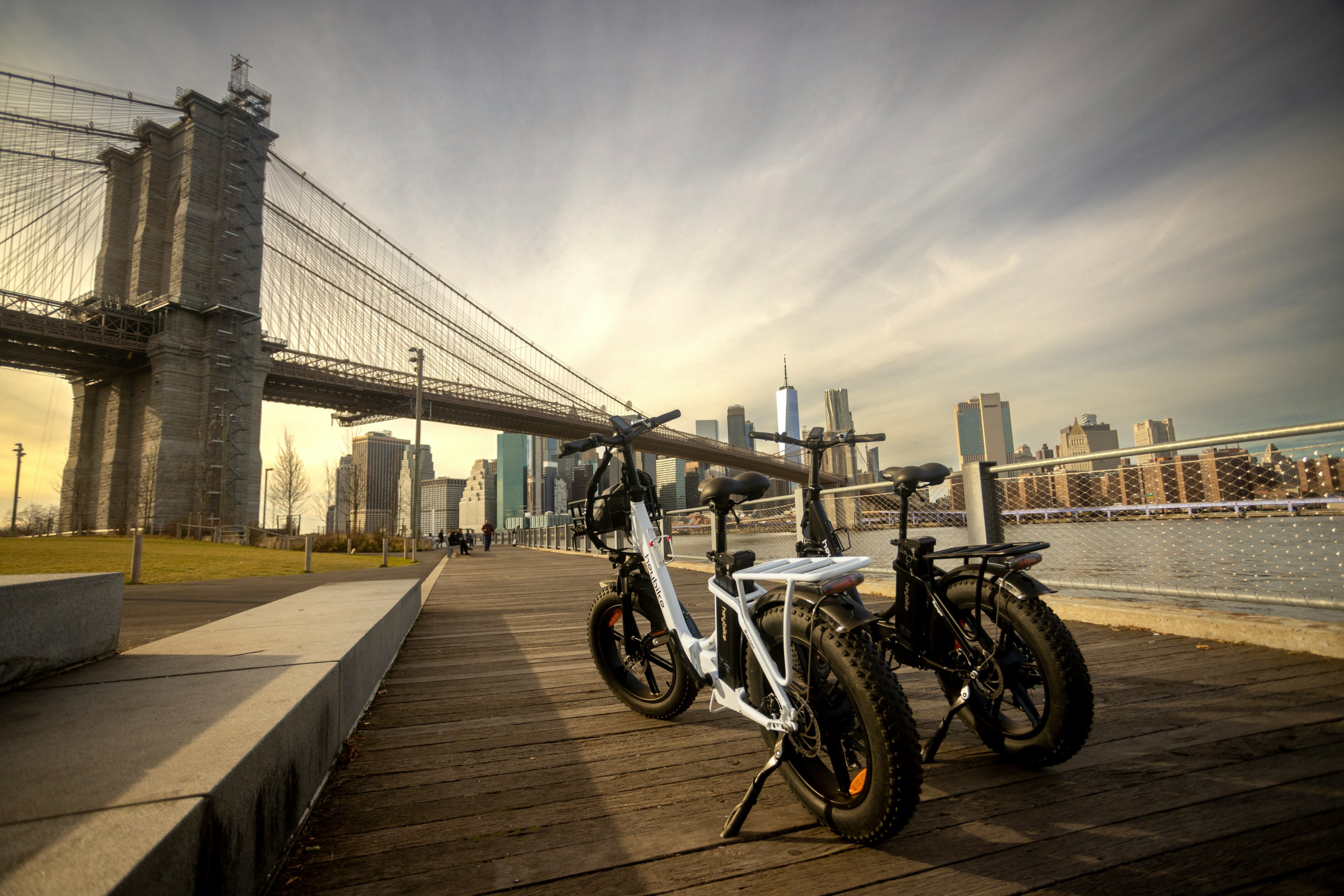Editor's note: opinion submissions do not necessarily reflect the views of Streetsblog USA or its editors.
Electric bicycles are booming in popularity across the United States. Over 1 million e-bikes were sold in 2022, compared to just 325,000 in 2018. These vehicles play a critical role in the broader transition to a more sustainable transportation system: in urban areas, they can replace short trips typically made by car, such going to the grocery store or getting a haircut. E-bikes also have numerous health benefits — and compared to bicycles and e-scooters, they are more accessible for the elderly and people with disabilities.
At the same time, there’s been a recent uptick in e-bike safety incidents, such as battery fires and traumatic head injuries. In New York City, fires from exploding micromobility batteries have killed multiple people when faulty cells in non-UL-certified batteries overheat. The high speeds that e-bikes can reach have also led to injuries, particularly among younger rides.
While safety concerns are real, these incidents have led to extreme and heterogenous policy responses across geographies. College campuses, such as Yale and Fordham, as well as government-funded organizations like the National Renewable Energy Lab have either banned e-bikes outright or restricted where they can be parked. New York City has even proposed its own Department of Sustainable Delivery, which will be tasked with regulating commercial delivery services relying on two- and three-wheel micromobility services — and cracking down on vehicles that don’t comply.
The use of regulation is necessary. But everyone adopting their own requirements could lead to confusion for users and manufacturers of e-bikes alike.
The solution to safety concerns is not to outright ban e-bikes or even limit their use. Instead, federal policymakers must establish clear, uniform regulations about what constitutes an e-bike, where they can be ridden, and where they can be sold. Manufacturers of e-bikes need clear guidance to determine their respective market strategies, and potential customers need assurance that e-bikes are safe and a viable mode of transportation. Bikeshare and delivery companies, such as Uber Eats, Divvy Bike, and Instacart, also have a growing percentage of their vehicle fleet made up of e-bikes, and a lack of regulation increases their insurance and capital risk, particularly in urban markets.
In the U.S., though, e-bike regulations are largely left to the discretion of individual states. The federal government does provide some baseline criteria in some settings; the National Parks Service, for instance, uses the “three-clas"s system to distinguish which vehicles can be ridden within its system and where, with “class one” e-bikes capped at 20 miles per hour when the rider is pedaling, “class two” capped at the same speed but including a throttle, and “class three” capped at 28 miles per hour without a throttle. That three-class system is also followed by 42 of the 50 states, some of which ban certain classes of e-bikes from bike lanes or roads.
The Consumer Product Safety Act, meanwhile, specifies that the motor of an e-bike cannot exceed 750 watts (1 horsepower) — and it excludes vehicles that can travel more than 20 miles per hour, much to the consternation of advocates who say “class three” models belong under the e-bike umbrella. On its own, that law only defines what can be sold as an e-bike, not how e-bike-like vehicles can be used in practice, and it also runs the risk of allowing e-bikes to being regulated more like mopeds rather than like bicycles.
The federal government’s regulations do not deal with numerous other safety concerns, such as the mineral composition of batteries, battery fire prevention, how fast riders should be allowed to travel above the pedal-assisted speed cap, and consumer protection in the form of warranties. Current regulations do not even begin to deal with retrofitted e-bikes, which fall into a legal grey area.
Currently, states and local governments have unilaterally set their own regulations. For example, in New York City “class three e-bikes” have a maximum speed of 25 miles per hour, compared to 28 miles per hour in Chicago. In comparison,Japan, India, and the European Union have all set a limit of 15 miles per hour.
One solution is to set a national speed limit of 20 miles per hour for all bikes that are ridden on paths shared with pedestrians, including e-bikes, which may help decrease injuries from high-speed crashes. In the 1970s, a national maximum speed limit (NSML) of 55 miles per hour was set for cars on interstate roads in response to the oil crisis; a limit for rural roads was set at 65 miles per hour in 1987. The NSML was repealed in 1995 which was followed by a rise in road fatalities due to an increase in speed limits. Establishing a national speed limit for e-bikes on shared-use paths could prevent a similar trajectory and could be implemented through a speed control interface or torque control systems. Another option is to increase quality standards for e-bike battery imports, which would reduce the prevalence of counterfeit batteries and minimize the risk of battery explosions.
Given e-bikes’ popularity, as well as their health and environmental benefits, banning them prevents us from cutting transportation emissions and making cities more livable. In the coming decade, e-bikes will play a massive role in the shift to decarbonized transportation, in the US and abroad. By creating clear, uniform guidelines on e-bikes, policymakers can ensure the safety of millions.






